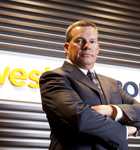One needs only look at Bruce Ballengee’s résumé to see that he’s a leader in promoting operational effectiveness. A former executive at some of the biggest names in consulting—including Accenture and Booz Allen Hamilton—and leading technology companies like Hitachi and Sprint, Ballengee turned his success towards his own consulting firm, Pariveda Solutions, in 2003. The move brings
Ballengee’s deep expertise in IT and strategic vision to organizations across the corporate spectrum. Today, Pariveda has grown to over 250 consultants with offices across the country. Originally educated in economics and finance, and with a deep desire to be a teacher, Ballengee runs the fast-growing Pariveda as an incubator for IT consulting talent, reveling in the moniker, “chief of people.”
What makes Pariveda’s culture different from other consulting companies?
In the world of consulting, the standard belief is that demand is scarce, the number of projects available in any given year is finite, and the goal is to compete for those projects. At Pariveda, we admit that yes, demand is finite—but the most constrained resource is talent. The more senior the talent, the more rare it is. The effective IT executive is the scarcest
resource of all.
How do you find effective IT executives?
It’s hard to find these people in the ranks of experienced IT professionals, because no one is really trying to develop them. At Pariveda, we are trying to develop effective IT executives as fast as we can. We go to college campuses, hire the best and brightest, and put them in an environment that is committed to developing their talents. We have had great success in bringing in college hires and keeping them with us as we have grown. One of the most telling statistics is that, for an eight-and-a-half-year-old business, we have promoted nine employees to the level of vice president. Most companies our size and age will have promoted only one or two.
What is the management style at Pariveda?
Very participatory. I give key presentations to our employees when they join the company as part of their introductory orientation. Up until about three years ago, I ran all the operations as well, but we became large enough at that point that we hired a really excellent executive to handle the day-to-day business. Now, I guide strategy. I spend probably half my time on personnel issues, working with employees to help them develop their careers.
What shaped your leadership style?
Some of it is just my basic nature, I think. I found myself serving as a team leader in high school and college. I like to take responsibility for helping people. There are always people in need of help, and I love to teach and coach, so it comes naturally. Over the years, I’ve learned that the payback for investing in people is enormous in terms of productivity and quality of work.
How do you build trust among employees?
This is something we talk about internally all the time. Trust is the lubricant that makes all things possible. A key aspect of building trust is the idea of transparency. We strive to be excruciatingly transparent—to let people have access to information, good and bad—and that builds trust. There is a cost to transparency, in that some people are exposed to information that they don’t like, or don’t want to hear, but the value is huge.
How does transparency figure into the IT consulting industry?
I think that in any service industry where the client works closely with the service provider, trust is very important. We periodically survey our clients, and they tell us that they don’t really learn to trust us until they have a real problem that we can help them with. It’s in moments of difficulty that trust is born.















